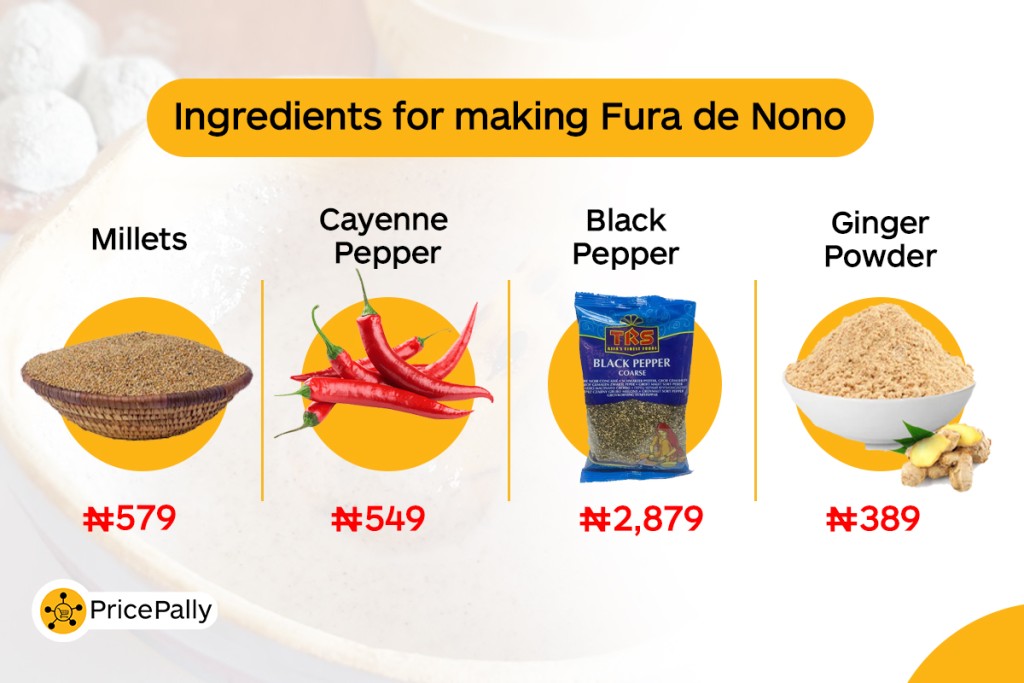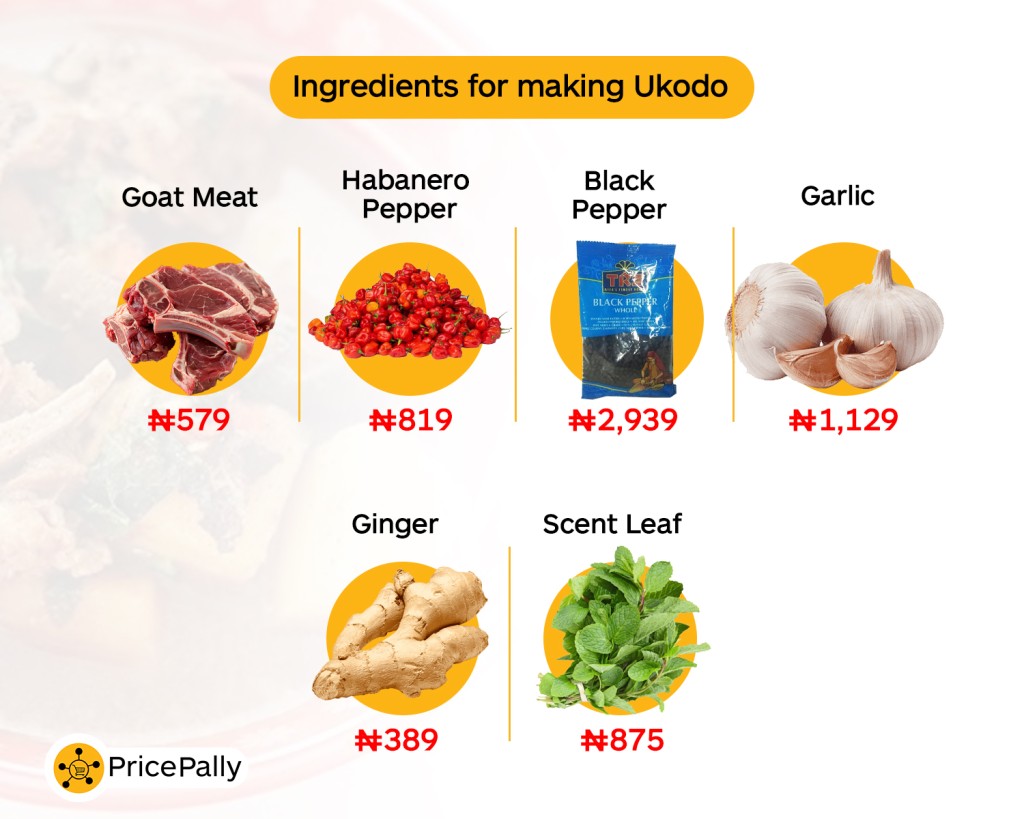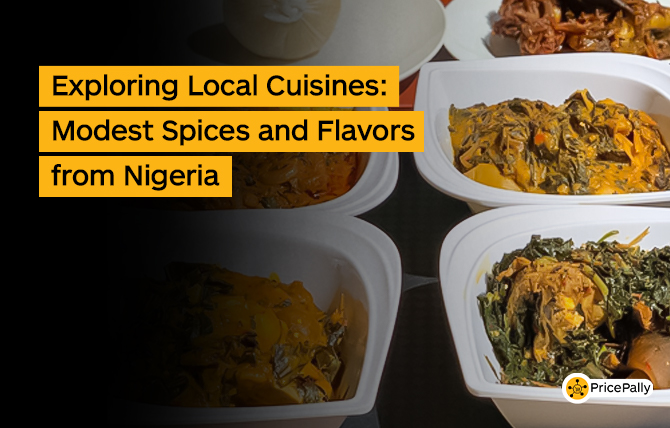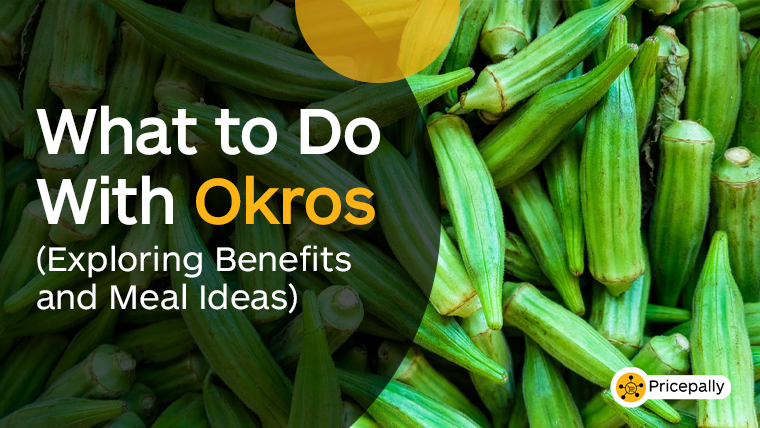Here’s a statement of fact: a true lover of Nigerian food knows that Nigerian food has authentic flavors. And anyone who views Nigeria through its cuisine will insist that Nigerian food is an eclectic combo of sweet, spicy, sour, bitter, and umami tastes.
Consider ofe nsala, a staple with roots in Anambra, commonly called white soup because unlike most traditional soups it doesn’t use palm oil. This Eastern soup merges the sweetness of well-cooked goat meat (or chicken) with the earthy, neutral taste of yam paste, the mild bitterness of uziza leaves and aidan fruit, and the umami aftertaste of ogiri. And that’s not considering the spice and sweetness of other ingredients like habanero (or ground) pepper ground crayfish, stock cubes, and the sourness of onions.
Majority of Nigerian meals offer similar gustatory joy. Our recipes account for such flavorful experiences: in marinating peppered fish with lime to add both sour and zesty perceptions, in garnishing efo riro with the umami of iru, the smokiness of roasted fish, the peppery spice of blended pepper mix. Our meals truly yield a discovery of authentic flavors.
Below, we attempt to document some of these authentic flavors. Let’s journey together.
Northern Nigerian Delights
What’s your favorite meal from the North? (you can say tuwo or suya 😄). If you had to list three Northern meals that would burst your taste buds with yum, would you come up with any new discoveries? Here are a few to keep in mind for the day of reckoning.
Miyan Taushe Soup
Miyan Taushe has stuck to my memory for over a decade, from a comprehension passage that described the experience of eating Tuwo Shinkafa and Miyan Taushe as fingerlicking exciting. While tasting this meal still remains a fantasy for me, the native Northern soup leaves a lingering sweetness long after the last lick.
Miyan Taushe. Source
The soup’s base ingredient is pumpkin, though some replace this with groundnut paste. The soup is prepared with yakuwa leaves (or spinach), beef or chicken broth, pepper mix, groundnut or peanut powder, and spices and seasonings. Miyan Taushe provokes an array of tastes including peppery spice, sweet, and sour. When done well, you can pair a plate of Miyan Taushe soup with white rice, masa (indigenous to Northern Nigeria), or fufu.
(watch a guide to making Miyan Taushe here)
Masa
I first heard of masa in 2022, when acclaimed food critic Ope Famakin took a tour to Kaduna (or was it Kano?). The ball-shaped food bore conjugal similarities to pancake, so little was my shock when I learned that masa translates to rice cake.
While rice cakes appear in a number of countries, the Northerners way of preparing masa — also called waina — marks it out for its unique sweetness. Unlike pancakes made by fluffing flour, sugar, and yeast, masa leans on softened and well-blended tuwo rice. Alternatively, you can soak jasmine rice overnight and blend into a smooth puree with which you can make your masa batter. A bite of masa is steeped in sweetness, which can be further increased depending on your tolerance level.

Fura da Nono
The process of fura da nono is time-consuming, but the reward of its sweet, spicy, and sour tastes well makes up for the hours of preparation. The inclusion of nono (fermented milk) in its recipe also lends this refreshing drink an umami tang. You could also replace nono with evaporated milk, though as this food creator remarks, “It just doesn’t feel the same.”
Fura da nono can be loosely read as fura in nono, which aptly sums up the preparation technique of this drink. Fura, the Hausa word for “millet ball”, is prepared by grinding millet balls, filtering to obtain smooth powder, and making the powder into several doughs.
The doughs are boiled until well-cooked, then mashed and remixed into balls, coated with millet powder, and dissolved in fermented milk. Ingredients like cayenne pepper, ginger powder, ground black pepper, and sugar complete the menu that make up this authentic flavor.
Fura de nono. Source.
Authentic Flavors from South South
The South-South—and East, as you’d discover later—is home to a potpourri of authentic flavors, soups and meals marked by mouthwatering portions and plate-licking moments. Let’s consider a few favorites.
Banga Soup
Banga bangs. The soup bubbles with lumps of thrill and contentment. A pot of steaming banga soup, buoyed by a lineup of assortments such as catfish, smoked fish, ground crayfish, and periwinkles is a meal to celebrate a month of doing good work or a love interest that loves you back.
Banga soup. Source
Banga soup is a labor of love, of being intentional about reaching for the hub of delicacy, that blend of spice and saltiness and remarkable creaminess. Having once partaken of the process of making banga soup, I’m persuaded that, as Sisi Yemmie implies in her tutorial video, you can’t rush the cooking time. But will you be glad you took time to make this soup? Absolutely.
The soup, prepared with palm nut and its oil extract, has its origin in the Urhobo tribe of Delta state. However, the soup is common in other South South cities, and has been dispersed, through different commercial food restaurants, to other Nigerian cities.
(explore the process of making banga soup here)
Ukodo
Ukodo shares a few key ingredients with ofe nsala, the South-east staple. This includes yam and goat meat. Thus, the earthy, neutral taste of cooked yam and the peculiar, slightly-burnt sweetness of goat meat carry over into this Deltan meal.
The first notable difference between Ukodo and Ofe Nsala is that while the latter requires grinding or blending the cooked yam into a paste that thickens the soup, Ukodo lets the yam cuts sit in the steaming pot. Most people serve and eat the soup with the cooked yam, which perhaps explains its English name, “yam and pepper soup dish.”
When making Ukodo, you can also include plantain. This imparts natural sweetness to the soup, a flavor balanced out by the mix of peppers — dry, black, and habanero — added, the sourness of garlic and ginger, and the inclusion of potash and scent leaf.
You can serve both Banga soup and Ukodo with starch (usi) or plantains.

Starch (Usi)
Like me, you may have heard of starch and thought, “Well, what makes starch special?” The thing is, not a lot of people explain what makes starch unique to this region. And not a lot of people cover the process of making starch, a favorite swallow for South South individuals.

Starch is gotten from cassava. The extraction process, which involves peeling, grinding, washing, filtering, and decanting, is akin to that of making the base, which forms fufu, a popular swallow in Southwest Nigeria. Once the starch is ready, the swallow is made by turning the starch in a pot of boiling water. Drops of palmoil are added to color the swallow with its trademark yellow hue.
You can pair starch (usi) with ohwo soup, another Deltan authentic soup made with palm oil and fresh fish.
Meals from the Southwest
Southwest Nigeria comprises of six states, including arguably Nigeria’s most-occupied state, Lagos. The Southwest is home to a number of meals with authentic flavors including
Ofada Rice and Ayamase
When you sit to a plate of Ofada rice and Ayamase, one thing is certain: there will be plenty oil running over on your plate. Prepared with unpolished, locally grown rice, Ofada introduced the taste buds to a nutty flavor, a flavor that isn’t all-sweet but isn’t all-earthy. When paired with ayamase, the meal can sparkle.
Ofada rice and ayamase. Image source.
Ayamase sauce, also known as designer stew, announces itself with that unmistakable sizzle of bleached palm oil and the immediate rush of spices dancing in your nose. Ayamase offers a flurry of unprecedented flavor, defined by the green bell peppers, locust beans (iru), and a mix of meats and boiled eggs steep in this stew, soaking in the oil, the spice, the saltiness.
The pairing tells a story of contrast—Ofada’s mild taste versus Ayamase’s bold, spicy, and savory punch. On a good day, a meal of ofada rice and ayamase sets a mood, one where you savor every bite, letting the peppers awaken your senses and the rice calm them back down.
Efo Riro
There’s no linear recipe for making efo riro. This could be because efo riro has multiple variants. Rising a shoulder ahead of the others on this list of variants is efo elemi meje (literally translates as “vegetable soup with seven hearts”), dubbed so because of the bundle of ingredients for garnishing the meal.
Efo riro is the meal to make when your long-time friend stops by at your apartment, or when your sibling returns after several months of studious campus learning. It’s the meal to show your parents (if they’re Yoruba) that you cherish the tradition, that you’re not gonna switch up your accent someday 😂.
In efo riro, though the vegetable claims the results, the other ingredients complete the project of producing a unique blend of tastes – sweet, spicy, and peppery. The chunk of beefs, ponmo (cowskin), shaki, and smoked fish, soused in a base seasoned with stock cubes and ground crayfish can revive the appetite on the blandest tongue. Efo riro is truly that meal.
Adalu
You may have encountered this meal under the tag “ewa a’lagbado”. This, within a literal scope, means “beans made with corns”. Adalu isn’t a popular feature in commercial restaurants – however, the porridge that inter-relates two distinct grainy meals is a great go-to meal if you tire of the routine beans.
Though the cooking process is simple and easy to memorize after one or two tries, the flavor of Adalu is far from forgettable. In fact, the flexibility of this meal is that you can moderate the flavor by including select extras or by serving with fried plantains or meat stew.
Flavors from Eastern Nigeria
The East shares a number of things with the South South – their affinity for succulent soups is one of those. You can explore authentic flavors from Eastern Nigeria through these meals
Ofe Onugbu
When you hear Ofe Onugbu, do you immediately think back to Ofe Nsala, the peculiar white soup? The name is only a decoy. Ofe Onugbu is a distinct soup from white soup.
The first thing to note about Ofe Onugbu is that it leaves you wanting for more. The second is that this soup begins with palm oil. The third is that it is also called bitter leaf soup. This bitter flavor abides, though not in an acrid, irritable manner. Instead, it melds with the sweetness of beef cuts, the smokiness of cured fish, and the earthy flavor of cocoyam.
Despite the glaring divergences between the ingredients, Ofe Onugbu and Ofe Nsala mirror each other’s cooking process – from the boiling and pounding of the tuber (cocoyam for Ofe Onugbu, yam for Ofe Nsala) to form a paste that thickens the soup, to the preparation of a protein stock that forms the soup, to the inclusion of a few scoops of ogiri that secretes an umami flavor.
You can serve Ofe Onugbu with pounded yam or any swallow of choice.
Abacha
Abacha, served on a plate, looks like a bowl of salad. Could that be because Abacha is dubbed by many as the African salad? Or could that be because of its union of nutritional benefits and rhymed mix of ingredients?
Abacha. Source.
You can get Abacha from dried, shredded cassava. To this, you combine a squad of other vegetables and fruits including garden eggs, garden egg leaves, utazi leaves, onions, and ugba. The presence of ogiri – which is to the South-East what iru is to the Southwest – and the sprinkling of stock cubes, crayfish, and salt, even out the taste.
You can serve Abacha as both a snack or a meal. You can reduce your prep time for making abacha when you cop our unique salad bundle that covers most of the ingredient you need for making abacha. Want more special offers? Check out our breakfast mix and pepper bundle.
Nkwobi
Picture this: cow foot, boiled to a tender chew, then drenched in a fiery, peppery palm oil sauce. The palm oil, thickened with potash, gives Nkwobi its signature gloss, a deep orange hue that promises flavor in every bite. But the real magic happens with the spices—cubes of maggi, ground crayfish, and just enough utazi leaves to add a touch of bitterness, cutting through the richness and leaving a pleasant aftertaste.
You can judge that Nkwobi is an OG meal by watching indigenous folks gather to feast on Nkwobi portions. Served in traditional wooden bowls, Nkwobi is often topped with finely chopped onions and an extra sprinkle of utazi, just enough to give it a fresh, zesty finish. You should savor this dish slowly, with friends, laughing and reminiscing over the affairs of life.
Before We Wrap Up…
So, which of these meals are you savoring next? A bowl of Nkwobi with your colleagues at work as you anticipate a good end to the year? Banga soup to tell your “crush” that you can be serious about them the way banga soup requires intense, dedicated focus? Fura da nono to refresh and water the mouth? Or a pot of steaming efo riro that speaks volumes just as its name?
Whatever your leaning, remember, you don’t have to do the normal. Yes, jollof rice is good, and is our national pride (Nigerian jollof or Ghanaian jollof is a never-ending debate). And it is true that there is always rice at home. But who says you have to defer to rice.
While we’re no food content creator or Michelin chef, we are certain of one thing – a taste of Nigeria is a tour of authentic flavors, regardless of where you’re from or what you’ve always eaten.









How Pricepally is reinventing Bulk buying Fresh-farm foods in Nigeria.
PRICEPALLY FOOD PRICE INDEX
WORLD EARTH DAY 2021
Will Standardized Food measurement become widely adopted in Nigeria?
Kuda Partners With PricePally to Help Nigerians Save More on Fresh Food
Bulk Food Supply for Businesses: How PricePally’s Loyalty Rewards Program Helps You Save More and Grow
PricePally PriceLock FAQs: How to Beat December Food Inflation in Nigeria
Exploring Okro: Benefits, Meal Ideas, and Okra Water